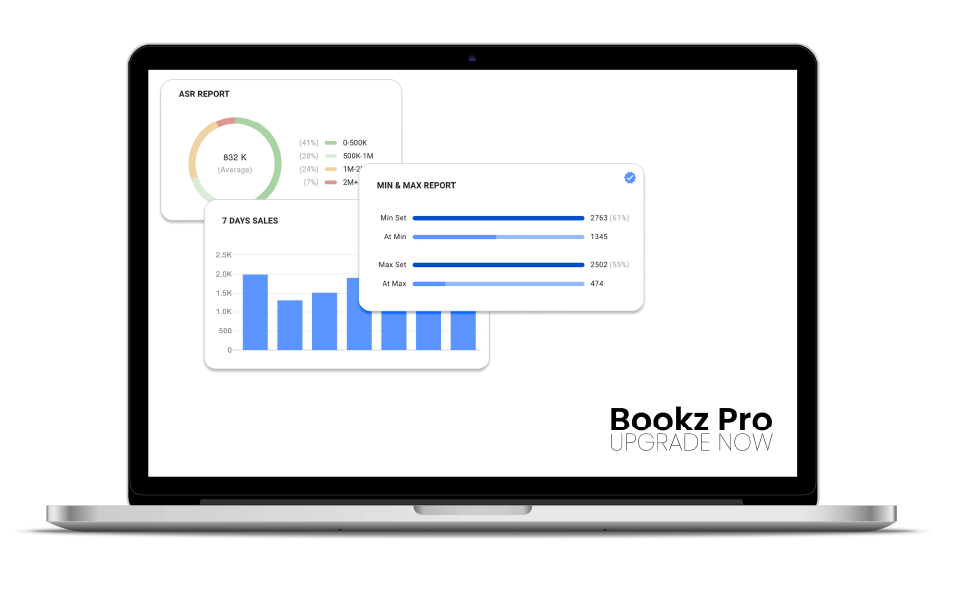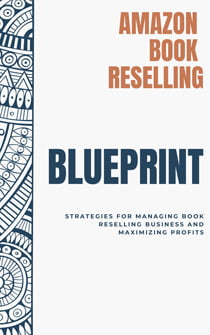The Ultimate Guide to a Faster and More Accurate Book Grading System

Introduction
Grading books for online sale can be complicated and time-consuming, particularly because customer satisfaction relies on accurate descriptions. From highlights and underlining to bent corners or torn dust jackets, every detail matters. Missteps can lead to complaints, returns, and damage to your seller reputation.
This guide will show you how to build a faster, more accurate grading system. With practical tips, ready-to-use templates, and smart tools, you can grade confidently, save time, and create listings that earn trust and drive more sales, whether you’re just getting started or already selling at scale.
Why Accurate Grading Matters
Accurate grading is the foundation of successful bookselling. When condition descriptions are vague or incorrect, customers are more likely to feel misled, leading to complaints, refunds, or returns.
On the other hand, clear and honest grading builds trust. When customers know exactly what to expect, they’re more likely to be satisfied with their purchase and come back for more.
Marketplaces like Amazon and eBay reward accuracy, too. Better feedback means higher ratings, more visibility, and stronger buyer confidence. That all adds up to more sales and better margins in the long run.
Common Challenges in Book Grading
Many book sellers struggle with the grading process. Grading books consistently presents several challenges for the seller:
1. Time-Consuming Process
Creating condition notes for each book can be tedious and repetitive. Describing every highlight, wrinkle, or cosmetic defect takes valuable time that sellers could otherwise use to source new inventory or manage other parts of the business.
2. Inconsistent Categorization
Terms like “acceptable,” “good,” and “very good” can mean different things to different sellers. Without a clear grading system, it’s easy to end up with inconsistent listings. That inconsistency can confuse buyers, damage trust, and lead to complaints when a book doesn’t match what they expected.
3. Risk of Overpromising
Overgrading a book even slightly can backfire. If the condition doesn’t match the description, the buyer may review negative feedback, costly returns, and a damaged reputation.
Identifying and resolving these challenges is crucial to creating an efficient, scalable grading system.
Building a Faster and More Accurate Grading System
Do you want to grade books more quickly and accurately? Here’s how:
Step 1: Establish Grading Templates for Sub-Conditions
Standardized condition templates save time and ensure consistency. Here are examples:
- Acceptable: Books with heavy highlighting, notes, water damage, missing dust jackets, or library marks.
- Good: Shows minor cosmetic wear, such as light creases, minor markings, or slight spine wear, and remains fully intact and readable.
- Very Good: Minimal signs of use with clean pages and an undamaged cover.
Step 2: Organize Inventory by Condition
Use labeled shelves or bins to sort your inventory by condition: acceptable, good, and very good. Color-coding sections and setting aside space for items needing review helps speed up your process and keep grading consistent.
Step 3: Train Staff to Grade Quickly
High-volume sellers need fast and accurate grading. Train employees to recognize sub-conditions within 10 seconds:
- Use real examples for each condition category.
- Conduct hands-on grading sessions.
- Implement quality checks to ensure consistency.
Well-trained staff will speed up listings without sacrificing accuracy.
Step 4: Use the “Underpromise, Overdeliver” Strategy
If you are uncertain about a book’s condition, grade it more conservatively. Customers appreciate it when the item exceeds expectations.
All in One Software
for Book Sellers
Scout Better – List Faster – Reprice Smarter
Over 30% Business Growth
Achieved by Our Clients

Streamlining Book Grading with a Smart Tool
Grading books efficiently takes more than just good judgment, it requires the right tools. For high-volume sellers, software like Bookz Pro helps streamline the entire process. It standardizes condition notes, reduces repetitive tasks, and keeps your workflow organized as your business grows.
Here’s how Bookz Pro supports a more efficient grading system:
- Preset Grading Templates: Automatically add consistent condition notes to your listings.
Improved Accuracy: Standardized inputs reduce the risk of human error.
- Inventory Management: Easily organize stock by condition and track it in real time.
- Real-Time Price Adjustments: Dynamic repricing based on current market trends and item condition.
- Data-Driven Decisions: Using Bookz Pro’s database scouting to guide smarter purchasing and pricing strategies.
Bookz Pro improves accuracy, saves time, and helps your business run more efficiently.
Tips for Maintaining Consistency and Scaling Your Process
To maintain high standards in book grading while scaling your operations, consider these key strategies:
1. Review and Update Templates Regularly
As market trends and customer expectations change, your grading templates must remain reflective of industry standards to prevent misclassifications and give your bookselling business the competitive advantage it needs against rivals. Regular reviews help prevent grading errors and keep your listings competitive.
2. Use Customer Feedback to Refine Your Grading System
Customer feedback is key to improving the grading process. When buyers point out differences between the book’s condition and its description, take note and update your templates as needed. Listening to your customers helps improve accuracy and reduce returns.
3. Track Efficiency Metrics to Scale Operations
Monitor key efficiency metrics like listing time, return rates, and sales velocity. These insights help you spot areas to improve, control costs, and grow your business smoothly. Regular evaluation and data-driven decisions are effective in maintaining and scaling your process.
Speed Up Book Grading and Streamline Your Workflow

Amazon Book Reselling Blueprint
Read now, explore our full guide. Your revolution starts here. Subscribe to get the blueprint!
Stop spending hours on manual descriptions. Bookz Pro makes it easy with ready-to-use grading templates, bulk listing capabilities, smart automation to eliminate repetitive tasks, and performance insights to further refine your grading system.
Start your free 14-day trial of Bookz Pro and get a bonus Amazon Book Reselling Blueprint, your comprehensive guide to streamlining grading and accelerating growth.
Conclusion
Accurate book grading is crucial to running a profitable operation. With standardized grading templates, organized inventory, and smart tools like Bookz Pro, sellers can streamline their workflows, reduce errors, and save time.
Combine consistency with strategies like “Underpromise, Overdeliver” to delight customers, reduce returns, and improve seller ratings. Revisit and refine your grading system regularly to stay competitive and efficient.
Frequently Asked Questions
A grading system is a standardized way to classify the condition of a book based on its appearance and usability. Common labels include “New,” “Very Good,” “Good,” and “Acceptable.”
Evaluators assess books for wear, markings, and overall readability. Based on these factors, they assign each book a condition grade with a clear description to match buyer expectations.
You should provide clear grading guidelines, hands-on practice sessions, and a quality control system. Encourage conservative grading to avoid overpromising.
Tools like Bookz Pro make the process easier by offering built-in grading templates, bulk listing features, and real-time inventory tracking. These features help you work faster, reduce errors, and grow your business more efficiently.
Accurate grading reduces returns, builds customer trust, boosts seller ratings, and ultimately drives higher sales.



